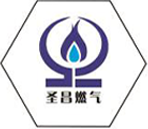
Nov . 06, 2024 20:02
Back to list
gas pressure vessel
Gas Pressure Vessels Essential Components for Safe Industrial Operations
Gas pressure vessels are integral components in various industrial applications, where the storage and management of gases under pressure are critical. These vessels are engineered to contain high-pressure gases safely, thus ensuring operational efficiency while minimizing the risks associated with gas handling.
In essence, a gas pressure vessel is a rigid container designed to hold gases at a pressure substantially different from the ambient atmospheric pressure. The application of these vessels is widespread, ranging from the chemical and oil industries to food and beverage production, and even in power generation. For example, gas pressure vessels are used to store natural gas, process gases, and even in the manufacturing of compressed air systems.
One of the foremost considerations in the design and construction of gas pressure vessels is safety. High-pressure environments can be hazardous, and any failure in the vessel could lead to catastrophic consequences, including explosions, toxic gas releases, or even environmental disasters. Therefore, engineers employ stringent design codes and standards, such as those set forth by the American Society of Mechanical Engineers (ASME) and the European Pressure Equipment Directive (PED). These codes stipulate minimum requirements for the materials, design, testing, and maintenance of pressure vessels to ensure they can withstand the internal pressures exerted by the gases they contain.
gas pressure vessel

Material selection is another critical aspect of gas pressure vessel design
. The materials used must have high strength and resistance to corrosion and fatigue, as the internal pressures and chemical environments can lead to deterioration over time. Common materials include carbon steels, stainless steels, and, in some instances, advanced composites, which offer excellent strength-to-weight ratios.Furthermore, the design of gas pressure vessels must incorporate features to mitigate the risks of pressure surges and thermal expansion. Devices such as safety relief valves are essential components that help prevent over-pressurization by releasing gas when pressure exceeds safe limits. Additionally, pressure vessels are often equipped with monitoring systems that provide real-time data on temperature, pressure, and structural integrity, allowing for proactive maintenance and preventing potential failures.
In operation, gas pressure vessels are typically part of larger systems that regulate the flow and storage of gases. These systems need to be carefully controlled to ensure optimum performance and safety. Regular inspections and maintenance are paramount, which include routine checks for leaks, pressure tests, and structural assessments. Such diligence helps in extending the lifespan of the vessel and averting any unforeseen hazards.
In conclusion, gas pressure vessels play a pivotal role in various industries by safely containing gases under pressure. Their design and construction require a comprehensive understanding of engineering principles, material science, and safety regulations. As industries continue to innovate and expand, the importance of reliable and safe gas pressure vessels will only grow, underscoring their significance in supporting modern industrial operations. Properly designed and maintained, these vessels not only enhance operational efficiency but also protect personnel and the environment from the inherent risks of gas handling.
Latest news
-
Safety Valve Spring-Loaded Design Overpressure ProtectionNewsJul.25,2025
-
Precision Voltage Regulator AC5 Accuracy Grade PerformanceNewsJul.25,2025
-
Natural Gas Pressure Regulating Skid Industrial Pipeline ApplicationsNewsJul.25,2025
-
Natural Gas Filter Stainless Steel Mesh Element DesignNewsJul.25,2025
-
Gas Pressure Regulator Valve Direct-Acting Spring-Loaded DesignNewsJul.25,2025
-
Decompression Equipment Multi-Stage Heat Exchange System DesignNewsJul.25,2025

